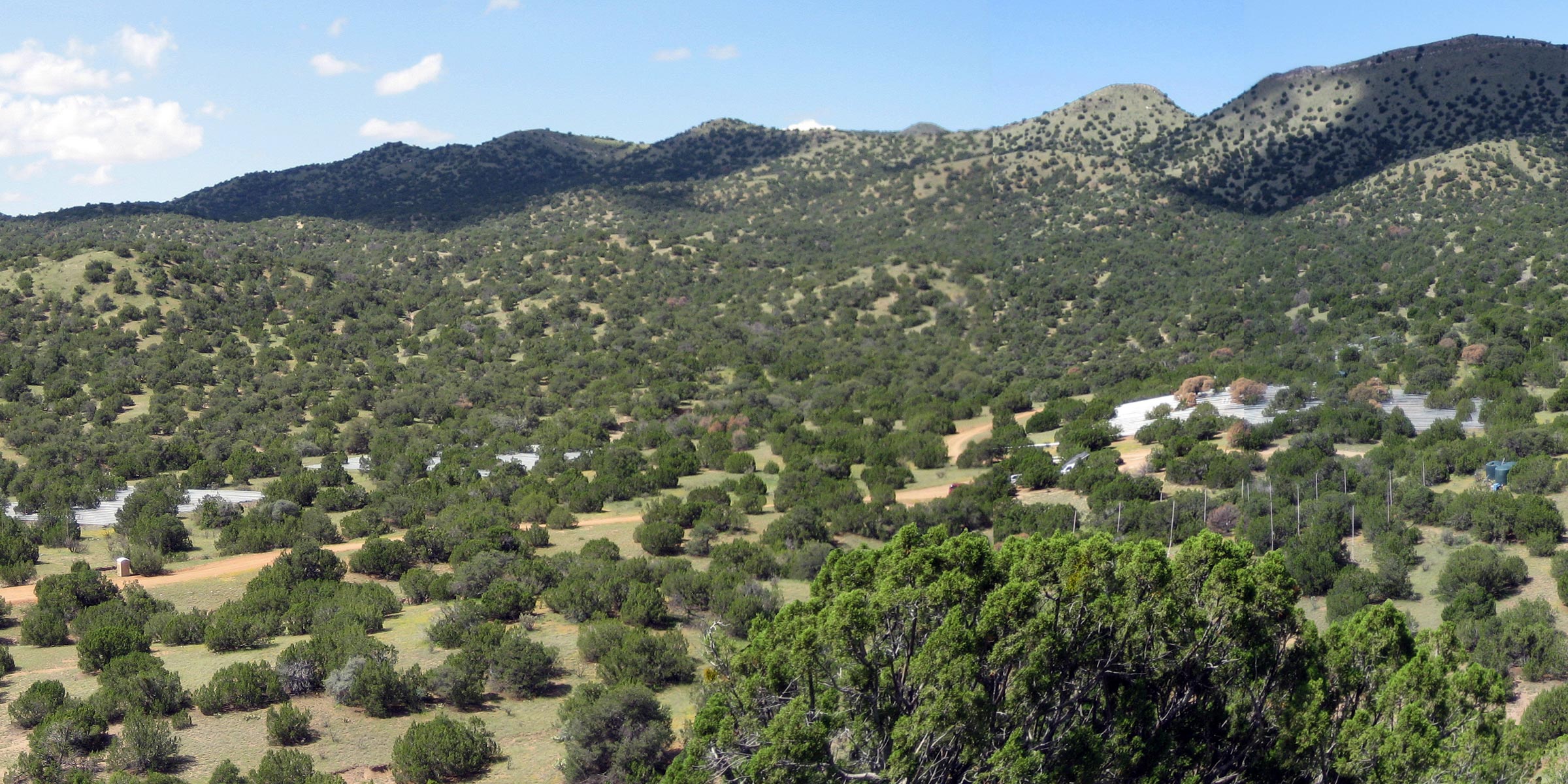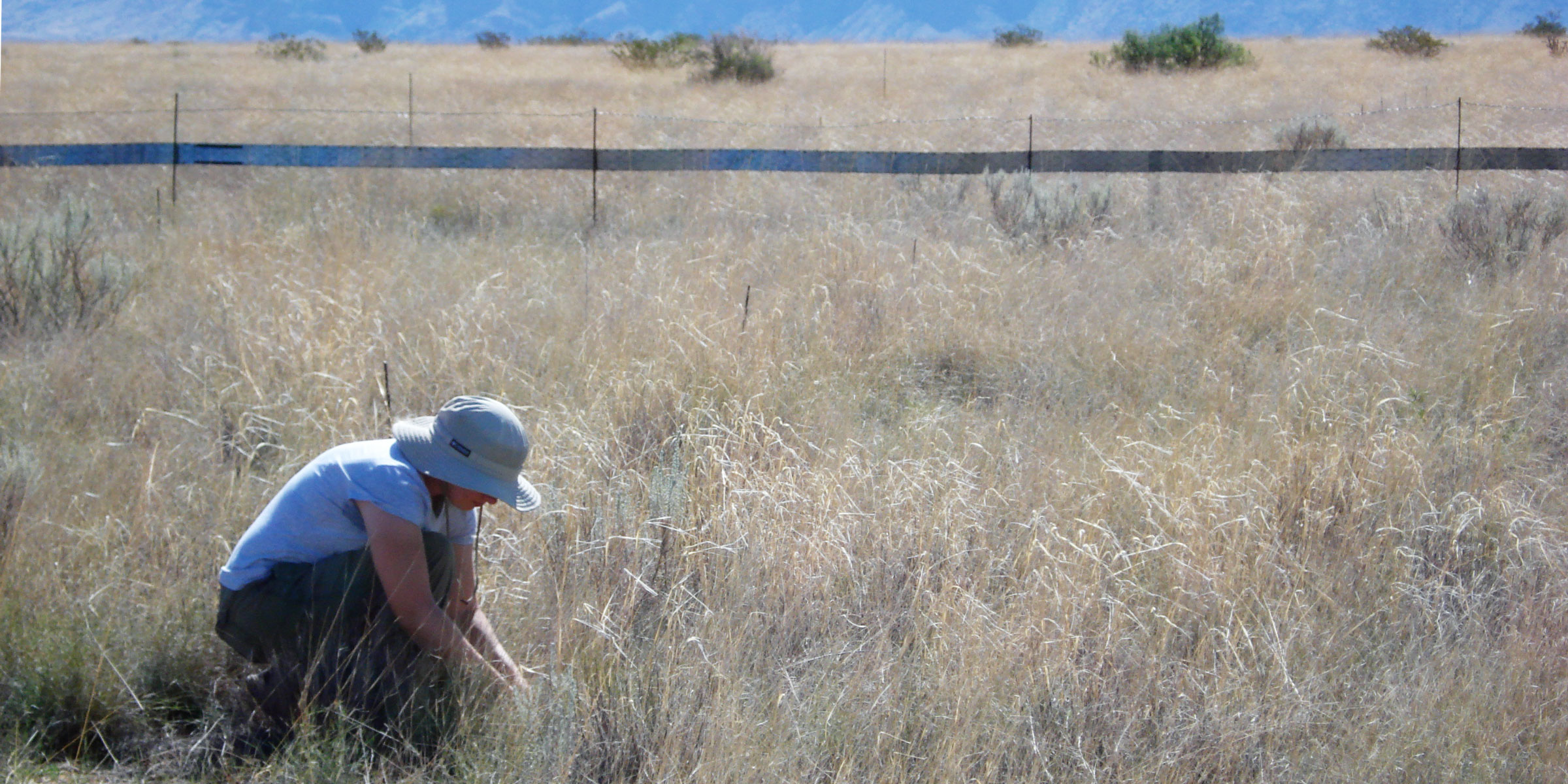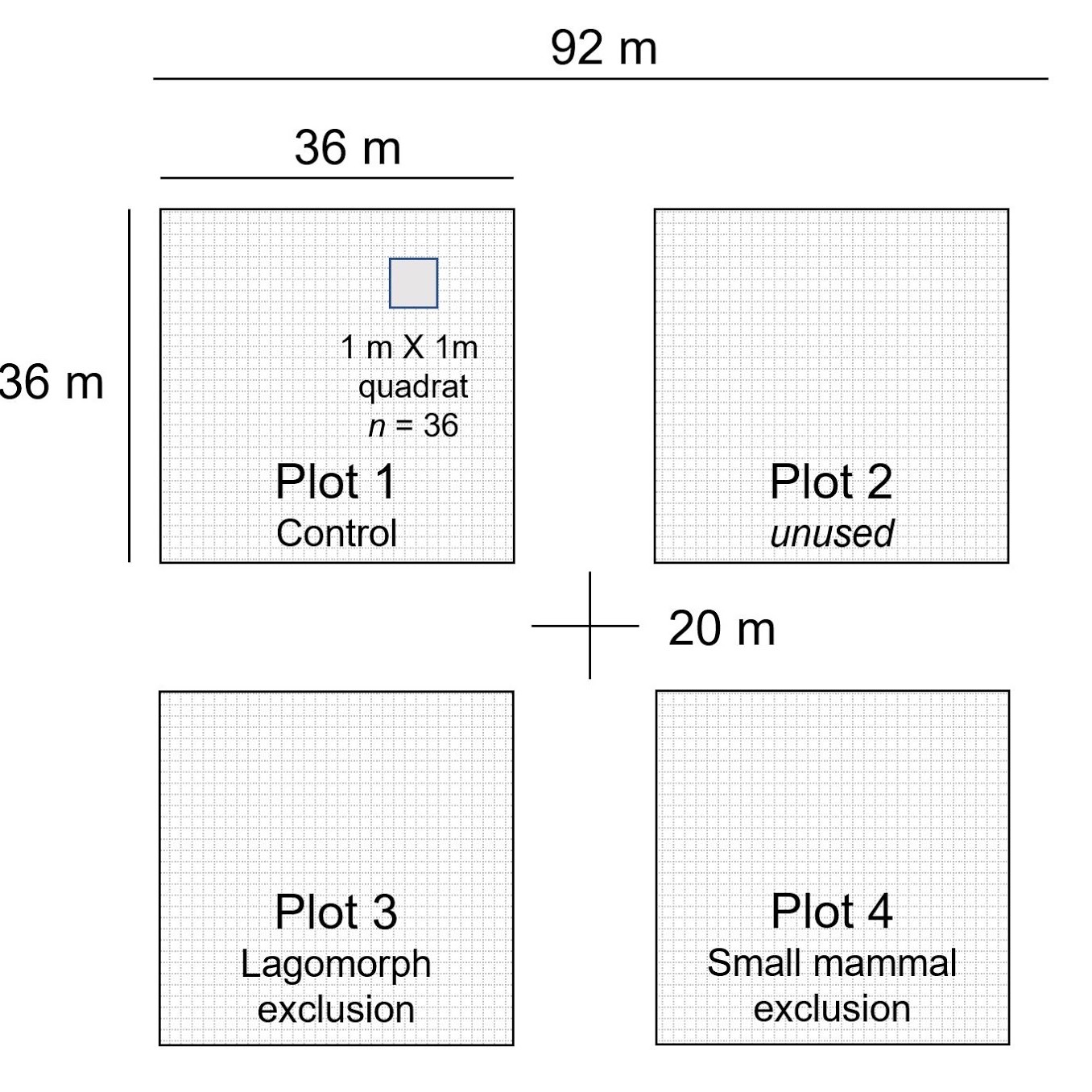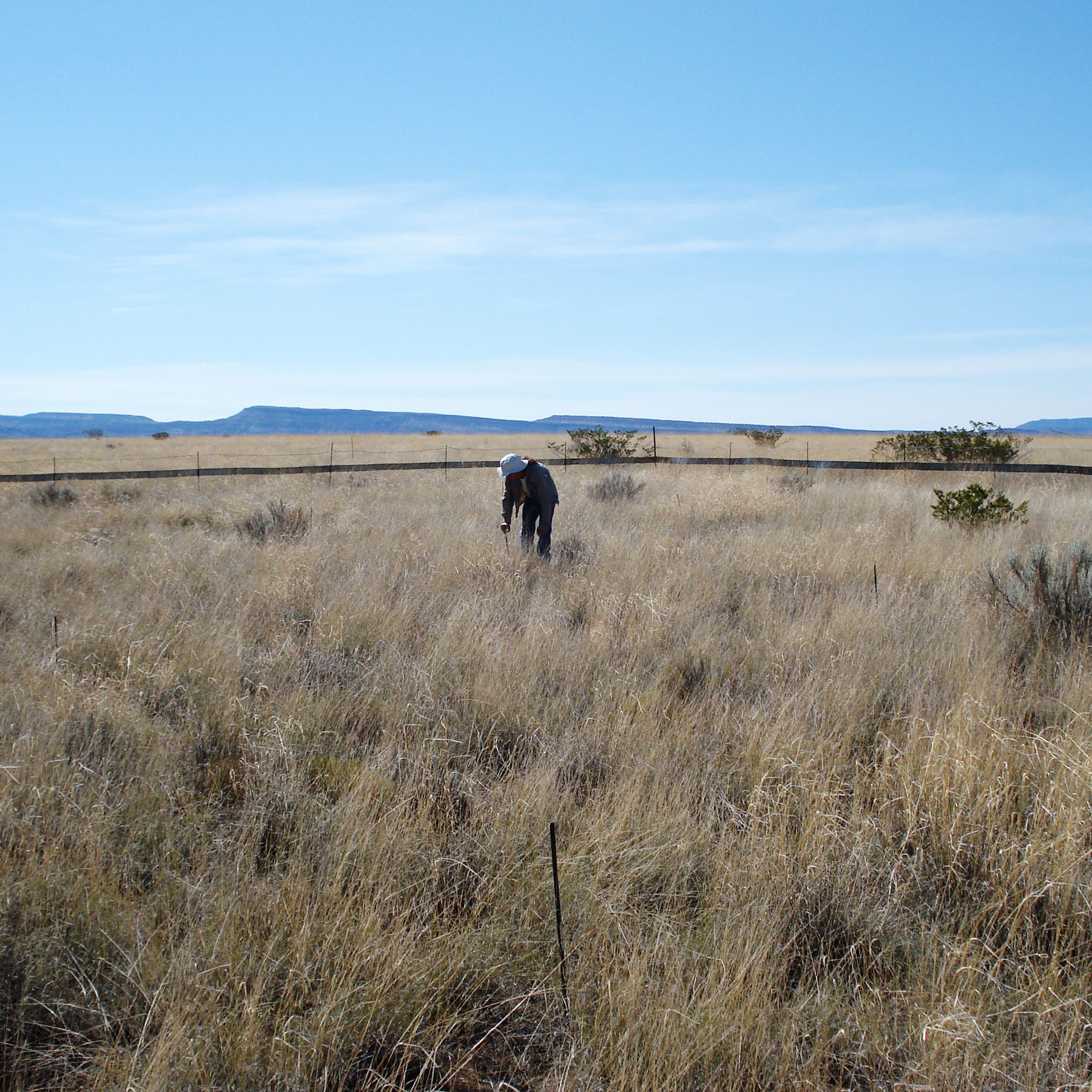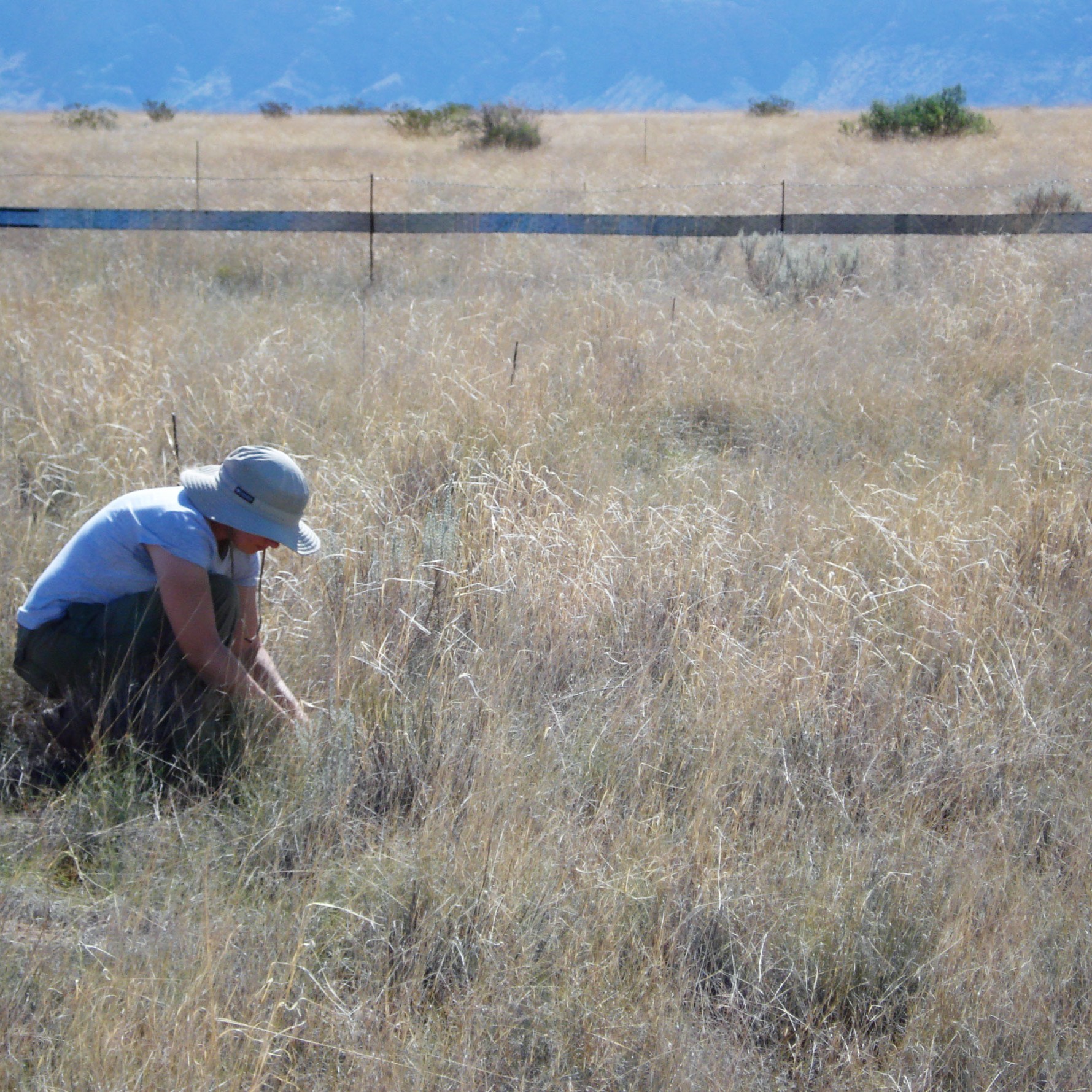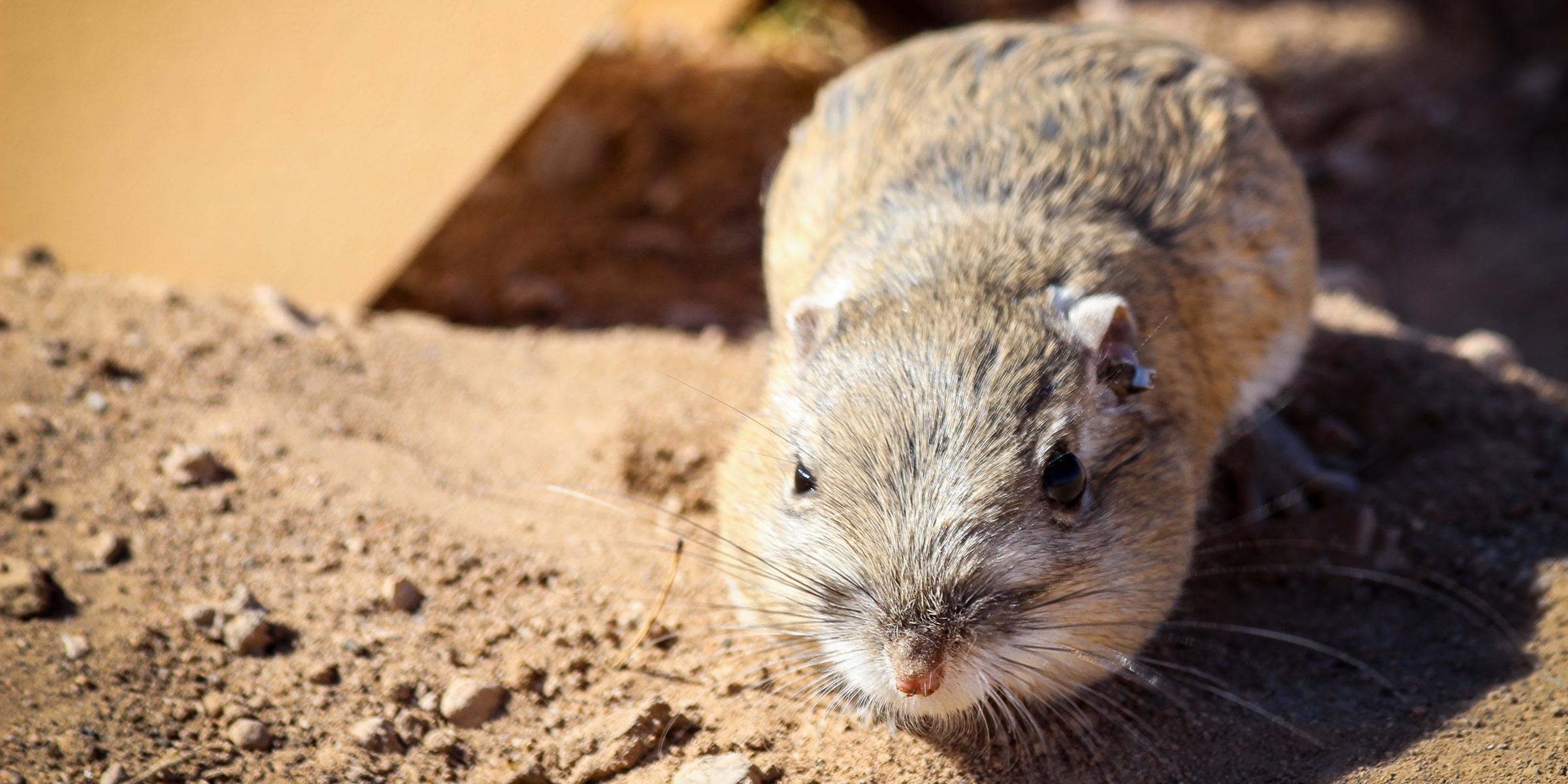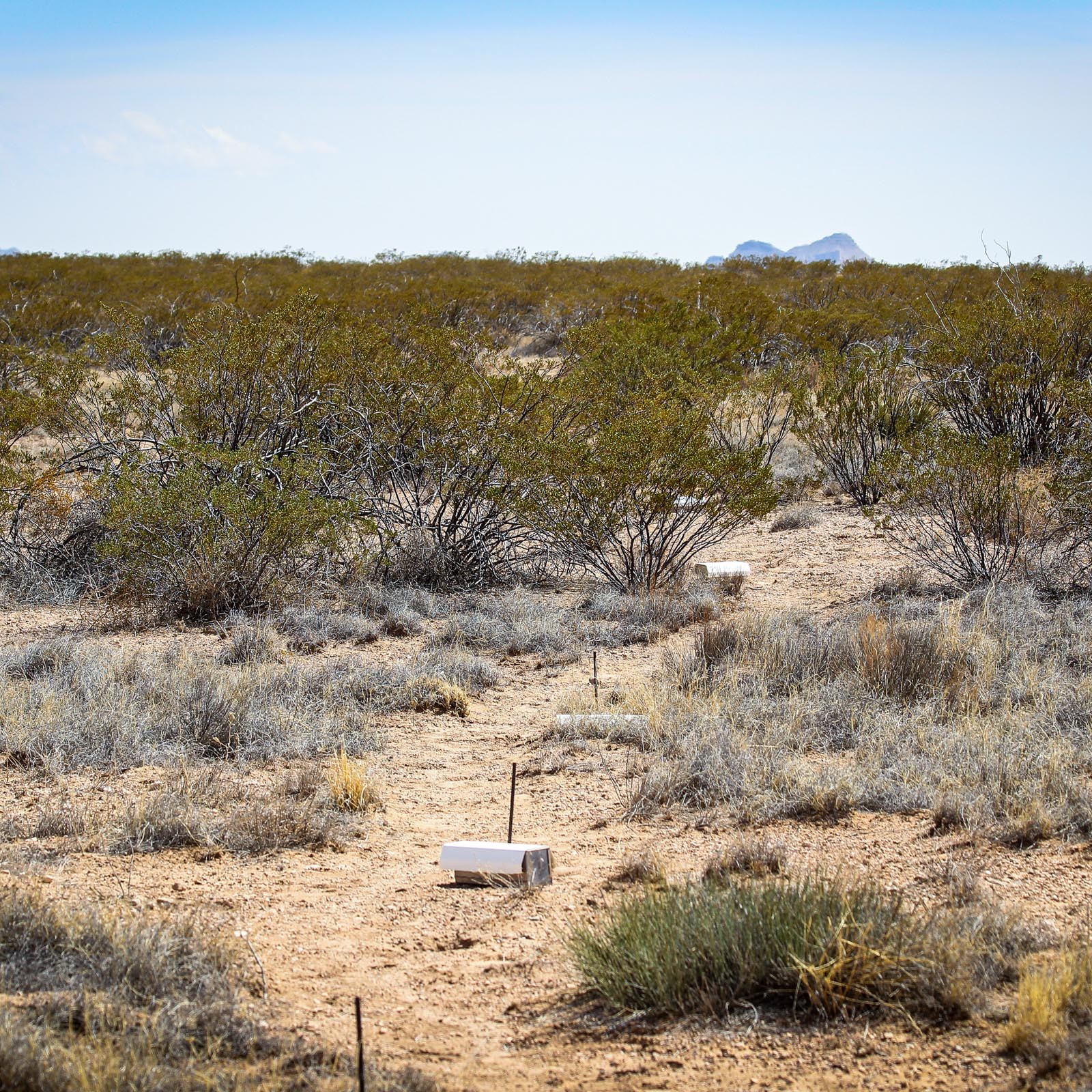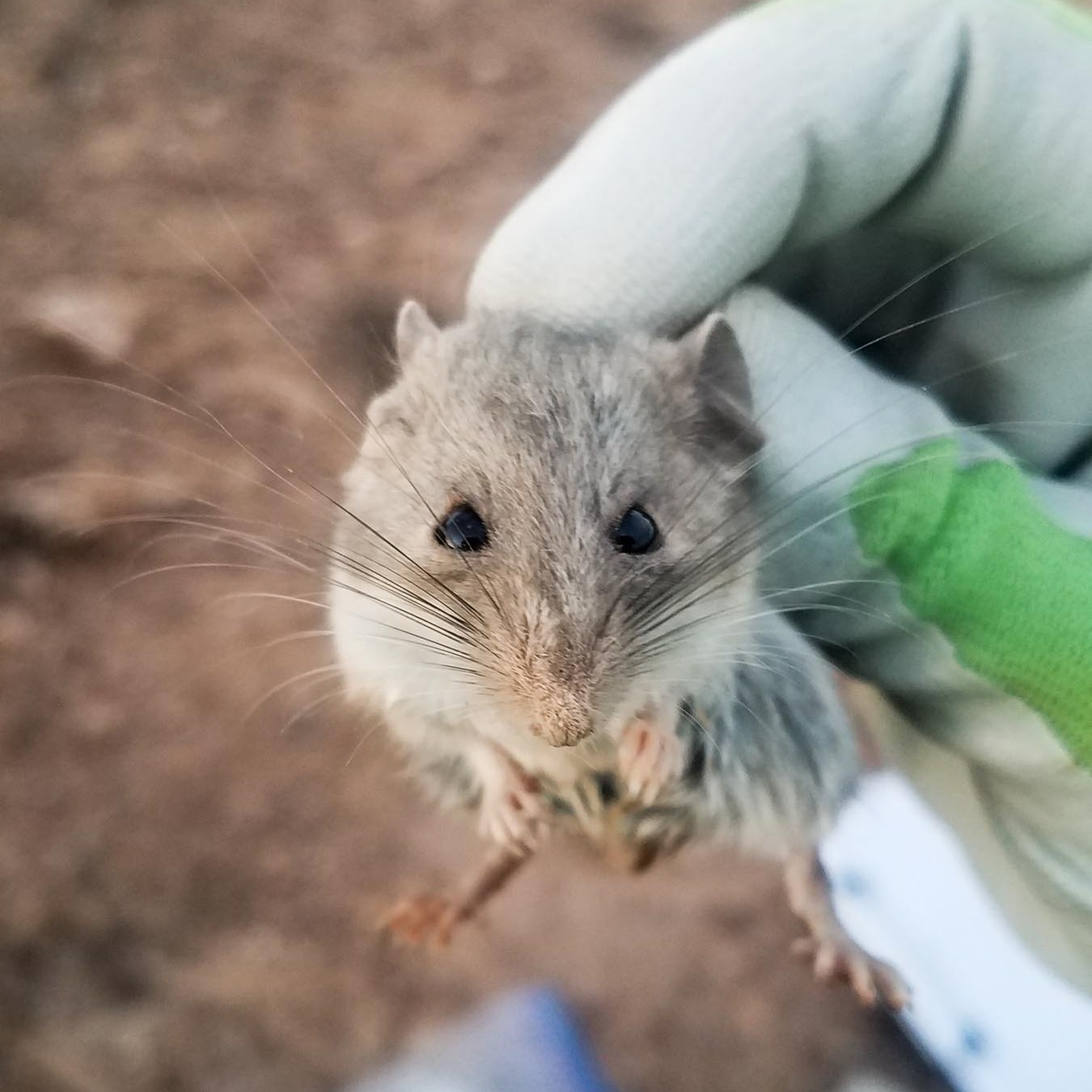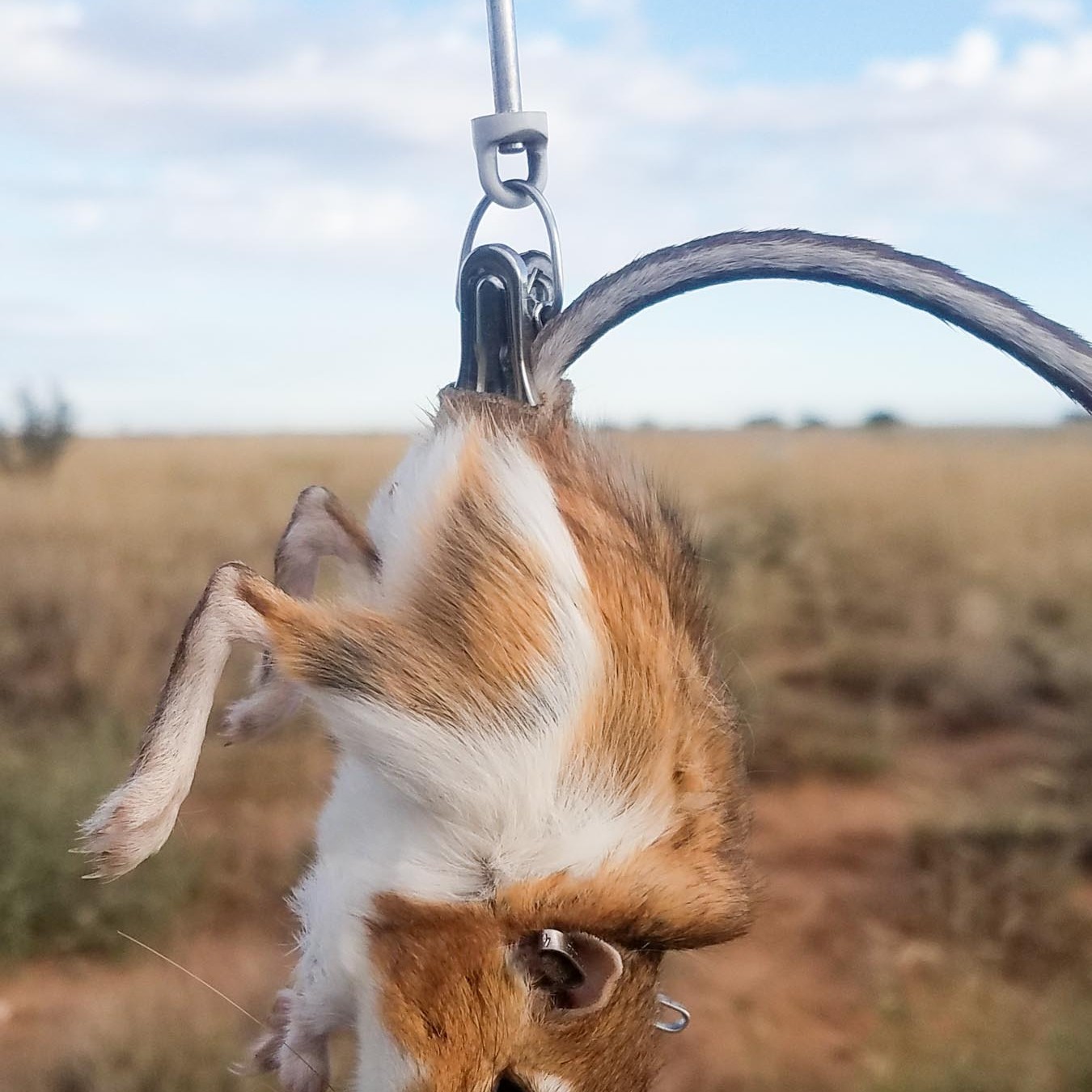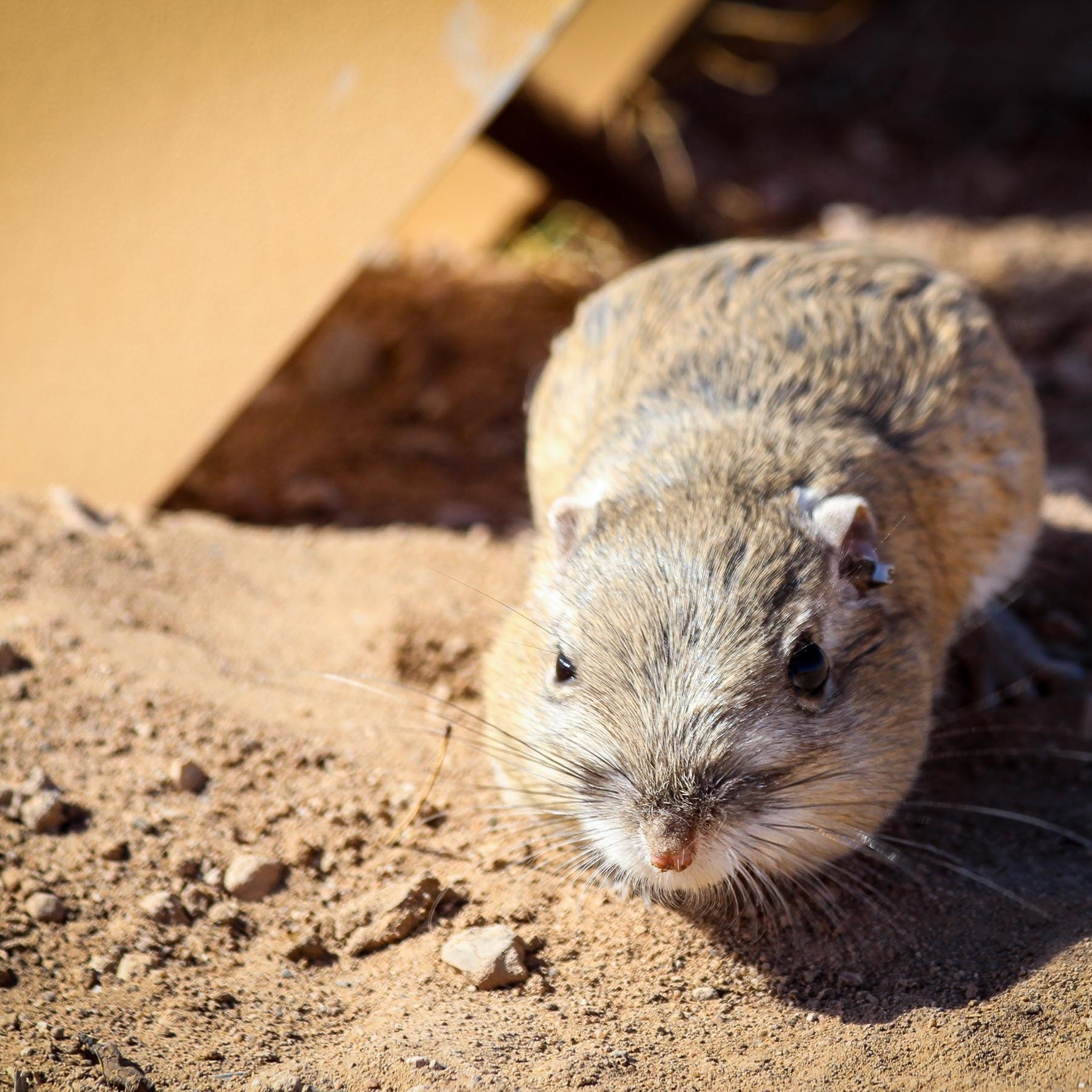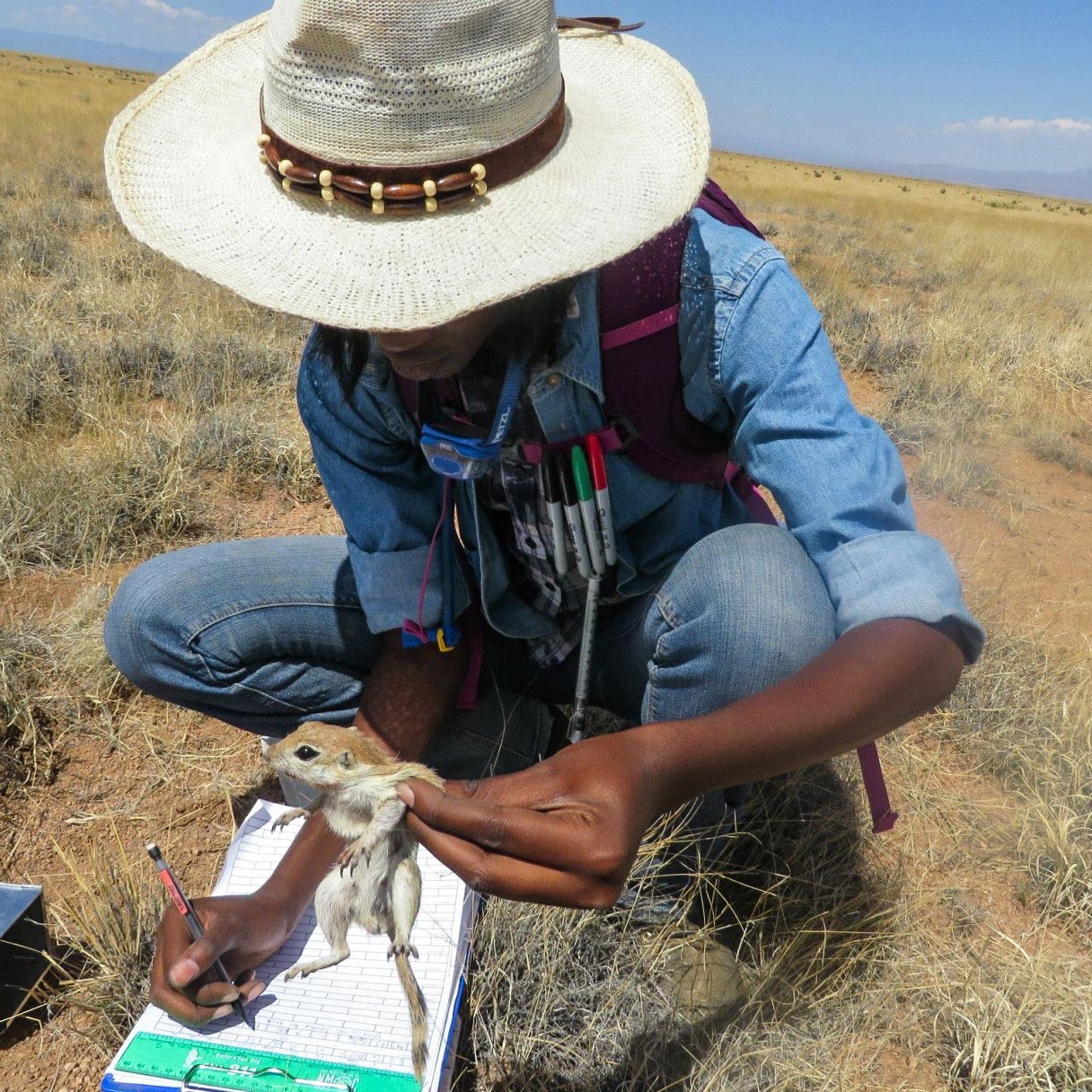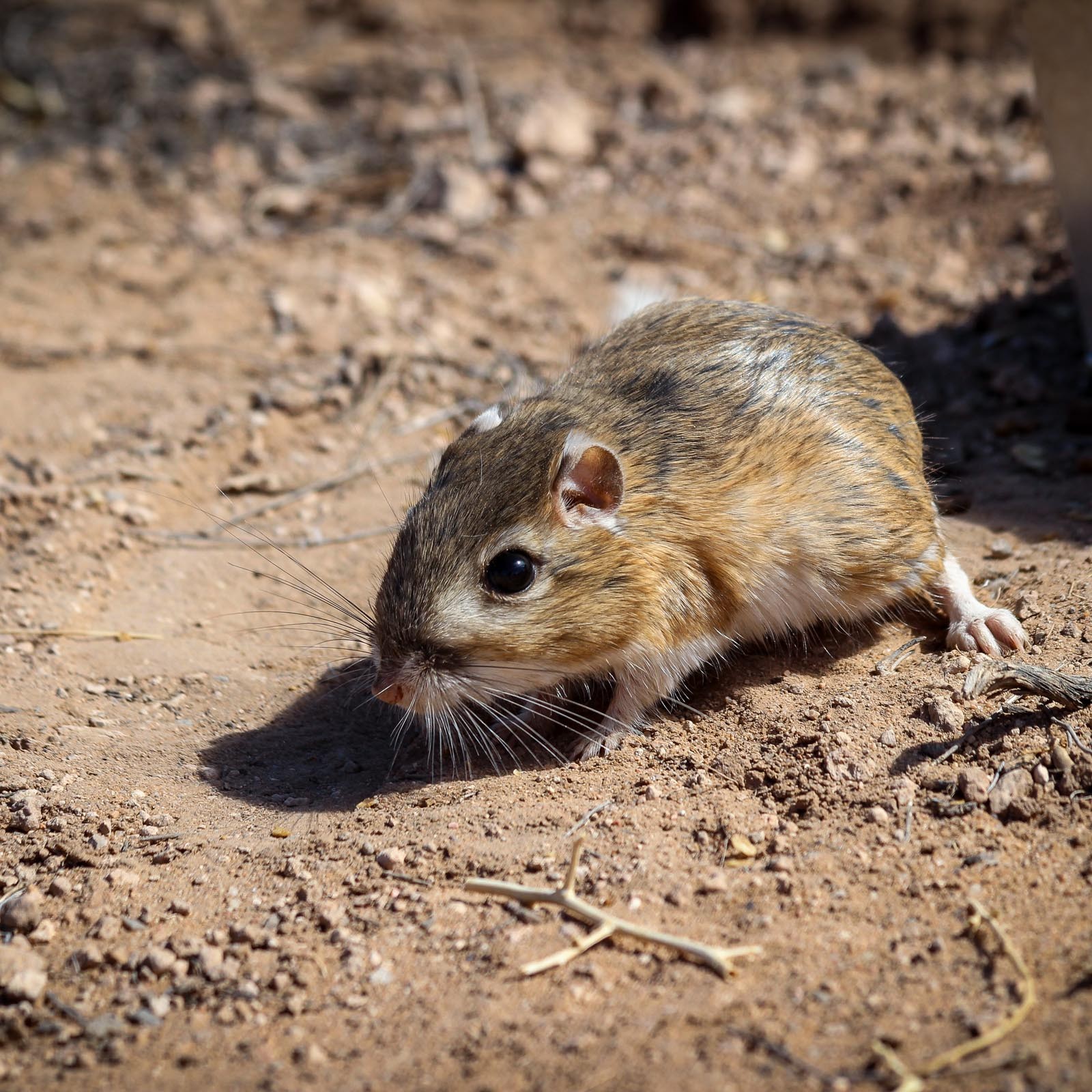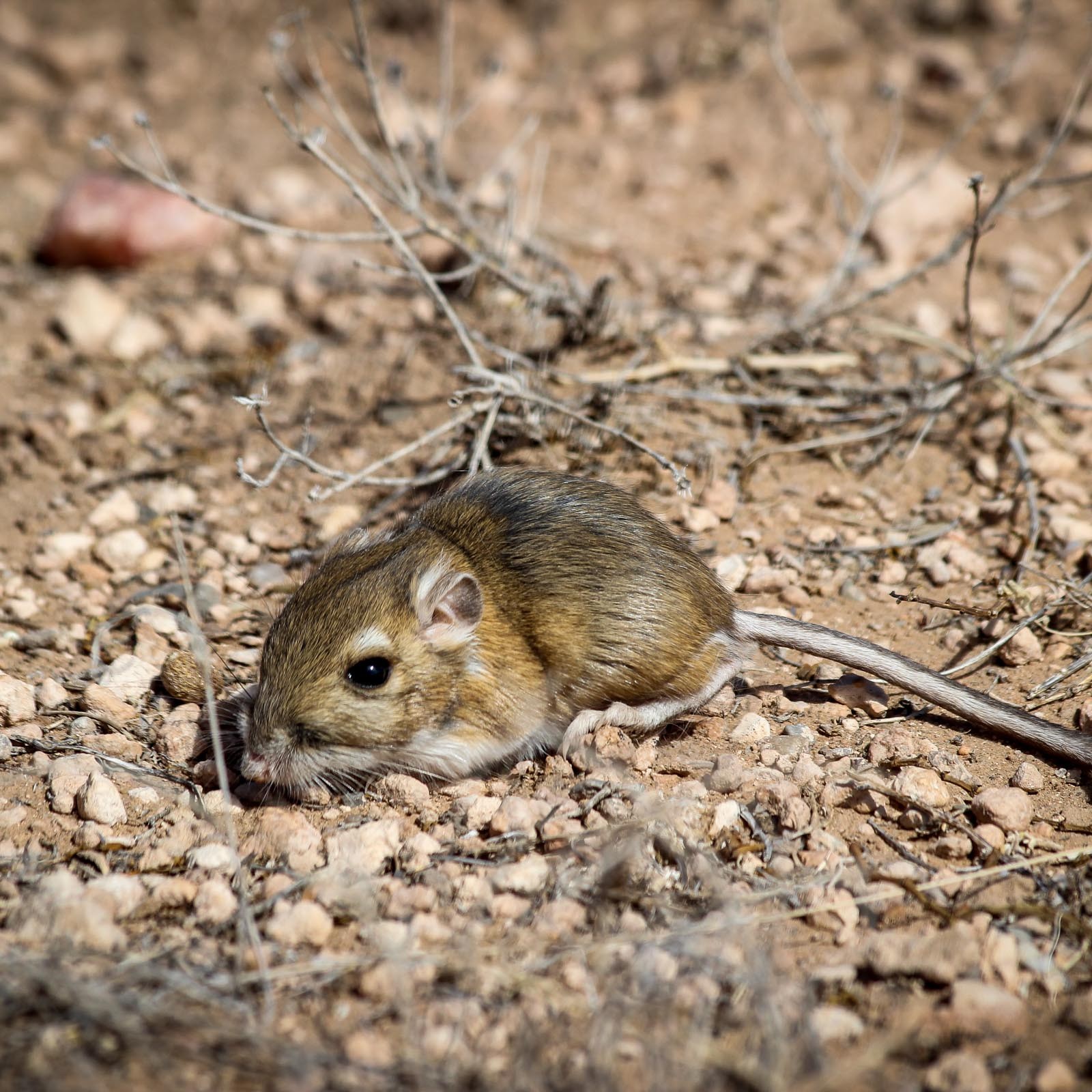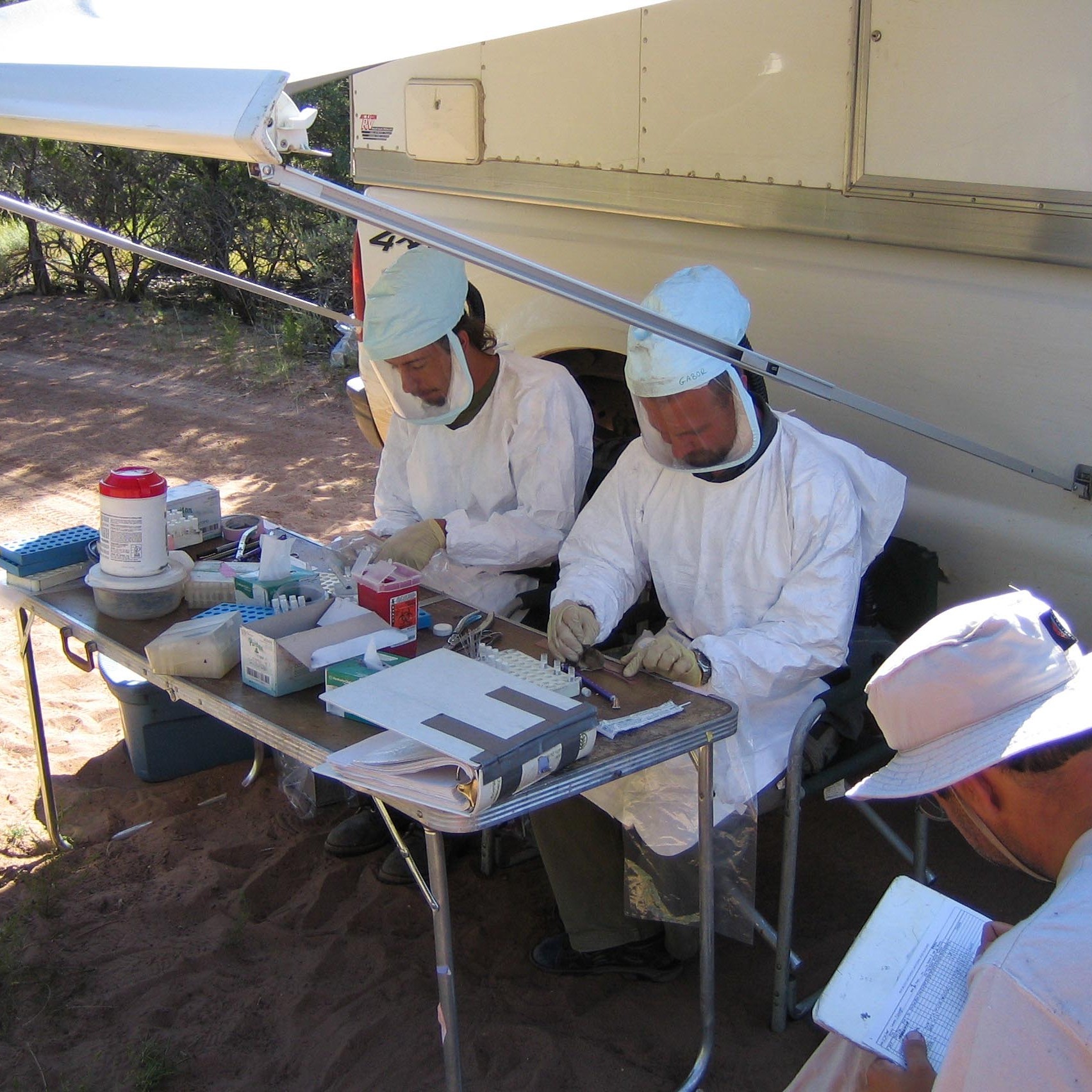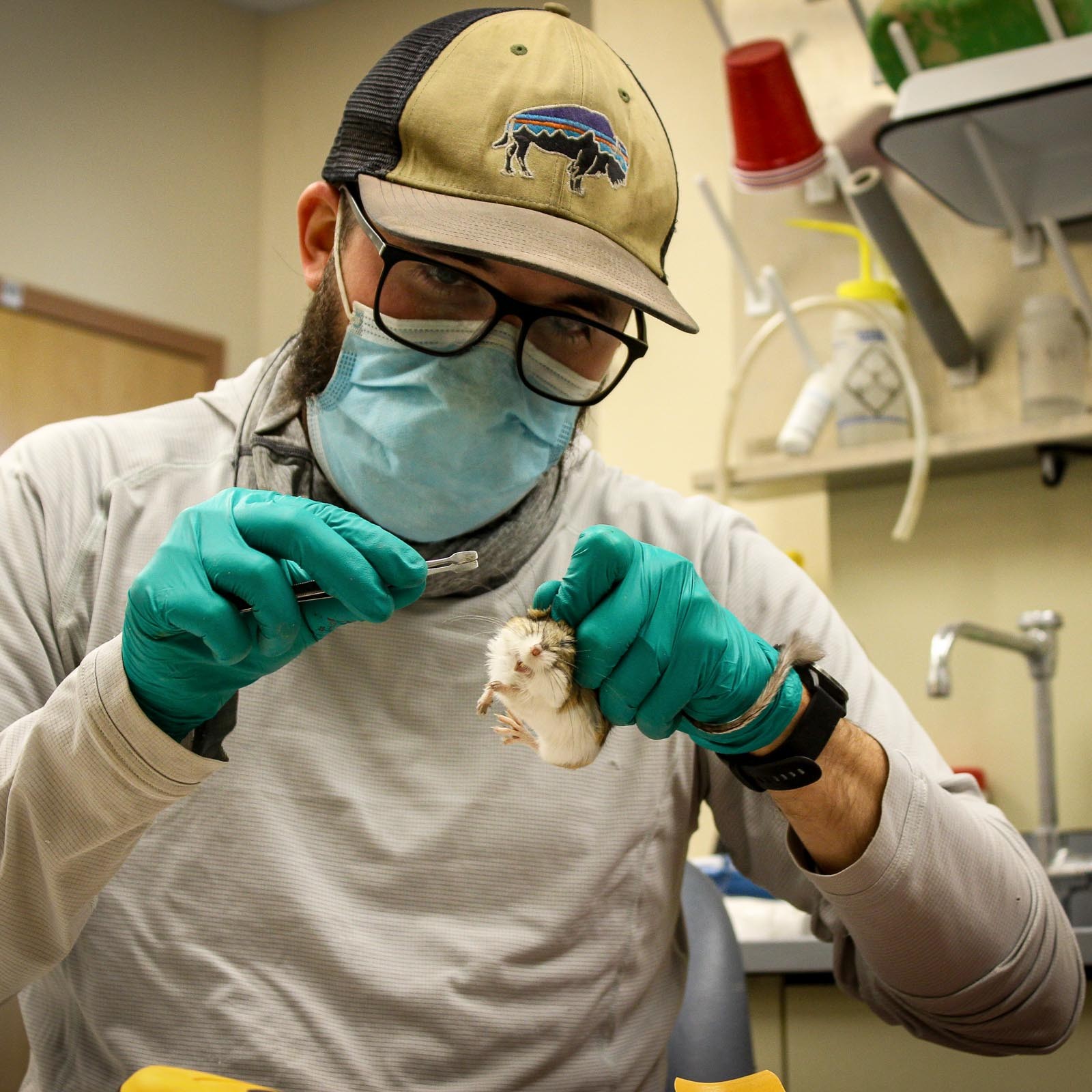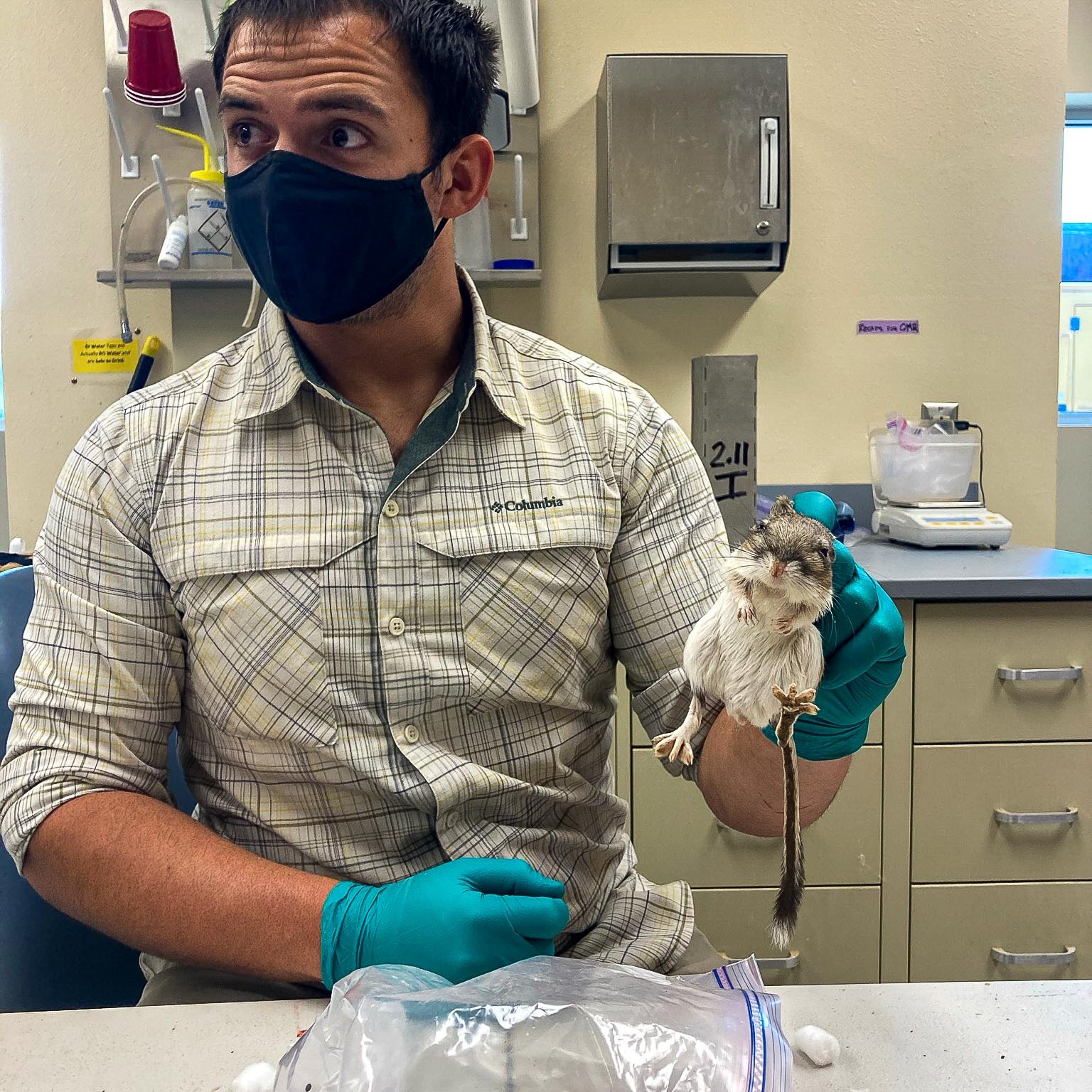Hydraulic Mechanisms of Survival and Mortality During Drought
Objective:
The objective of this study was to manipulate trees in a piñon-juniper woodland to understand the mechanistic basis of the differential mortality often observed during extreme drought in this dominant ecosystem of the southwestern USA.
Novelty:
Initiated in 2006, this study imposed treatments at a scale that is unusually large among such experiments. We maintained treatments for a six-year period (2007-2013) that is also beyond the scale of many such experiments. After extensive mortality in two of the three drought treatments during 2008-2009, an additional control and drought plot were added in 2010, each treated to control bark beetles to assess the role of drought vs. drought + beetle impacts on piñon mortality.
Design:
The original study was based on a factorial design featuring three blocks of four plots, with plots assigned to one of four treatments: untreated control, a drought treatment applied by removal of ~45% of ambient rainfall, an irrigation treatment applied by the addition of five to six rainfall events of 19 mm simulated using aerial sprinklers, or a ‘cover control’ treatment consisting of 45% coverage of a full-sized plot with the same plastic used in the drought treatment structure to allow ambient rainfall to reach the plot surface.
Responses:
We recorded environmental data (precipitation, soil moisture, soil temperature, micrometeorology), tree water potential, tree sap flow, non-structural carbohydrate content of piñon and juniper to evaluate possible mechanisms of response and mortality.
Key publications:
McDowell, N. G., W. T. Pockman, C. D. Allen, D. D. Breshears, N. Cobb, T. Kolb, J. Plaut, J. S. Sperry, A. West, D. G. Williams, and E. A. Yepez. 2008. Mechanisms of plant survival and mortality during drought: Why do some plants survive while others succumb to drought? New Phytologist 178:719–739. https://doi.org/10.1111/j.1469-8137.2008.02436.x
Datasets:
Ecosystem-scale rainfall manipulation in a Piñon-Juniper Woodland: Volumetric Water Content (VWC) Profile Data (2009-2013). https://portal.edirepository.org/nis/mapbrowse?scope=knb-lter-sev&identifier=287
Ecosystem-scale rainfall manipulation in a Piñon-Juniper woodland: Tree Sapwood and Leaf Area Data (2011). https://portal.edirepository.org/nis/mapbrowse?scope=knb-lter-sev&identifier=288
Ecosystem-Scale Rainfall Manipulation in a Piñon-Juniper Forest at the Sevilleta National Wildlife Refuge, New Mexico: Sap Flow Data (2006-2013). https://portal.edirepository.org/nis/mapbrowse?scope=knb-lter-sev&identifier=277
Small Mammal Exclusion Experiment
Objective:
This experiment was designed to determine how much the presence of small mammals regulates plant community structure and spatial vegetation patterns in Chihuahuan Desert shrublands and grasslands. We have recently re-evaluated the results in conjunction with our new Sevilleta Plant Traits database to assess how mammal consumers influence plant community trait distributions and to understand how the influences of small mammals interact with climate to affect plant communities over time. This study provided a long-term experimental test of the role of consumers on ecosystem pattern and process.
Novelty:
Determining how climate affects biotic interactions can improve understanding of drivers of context dependency and inform predictions of how species interactions may influence plants under future climates. In dryland environments, the community and ecosystem-level impacts of small mammal seed predators may depend strongly on climate, yet long-term studies documenting impacts of rodents on plant communities over variable climate conditions remain scarce. With the exception of Jim Brown’s seminal work in the Chihuahuan Desert in Portal Arizona (https://portal.weecology.org/), we know of no other experimental studies longer than five years that have examined how exclusion of an entire small mammal community influences an intact plant community. As a result, the extent to which small mammals have long-term, sustained impacts on plant communities remains uncertain.
Design:
There were 2 study sites, the Five Points grassland site and the Rio Salado creosotebush site. Each study site was 1 km by 0.5 km in area. Three rodent trapping webs and four replicate experimental blocks of plots were randomly located at each study site to measure vegetation responses to the exclusion of small mammals. Each block was 92 m X 92 m and had four experimental plots (36 m X 36 m), each occupying 1/4 of the block. The four treatments within each block included one unfenced control plot (Treatment: C), one plot fenced with hardware cloth and poultry wire to exclude rodents and rabbits (Treatment: R), and one plot fenced only with poultry wire to exclude rabbits (Treatment: L). Each of the three plots in a replicate block were separated by 20 m. A grid of 36 sampling points was positioned at 5.8-meter intervals on a systematically located 6 by 6 point grid within each plot. A permanent 1 m X 1m vegetation quadrat was located at each of the 36 points with a 3 m wide buffer area situated between the grid of 36 points and the perimeter of each plot.
Responses:
Canopy area and maximum height of each plant species were measured from each 1 m x 1 m quadrat. We also measured vegetation along line transects, leaf litter, biocrusts, ants, termite casings, soil disturbances by specific animal taxa, and small mammal feces.
Key Datasets:
Small Mammal Exclosure Study (SMES) Vegetation Data from the Chihuahuan Desert Grassland and Shrubland at the Sevilleta National Wildlife Refuge, New Mexico (1995-2009). https://portal.edirepository.org/nis/mapbrowse?scope=knb-lter-sev&identifier=97
Small Mammal Exclosure Study (SMES) Surface Soil Disturbance in the Chihuahuan Desert Grassland and Shrubland at the Sevilleta National Wildlife Refuge, New Mexico (1995-2005). https://portal.edirepository.org/nis/mapbrowse?scope=knb-lter-sev&identifier=99
Small Mammal Exclosure Study (SMES) Vegetation Line Intercept from Chihuahuan Desert Grassland and Shrubland at the Sevilleta National Wildlife Refuge, New Mexico (1995-2005). https://portal.edirepository.org/nis/mapbrowse?scope=knb-lter-sev&identifier=95
Small Mammal Exclosure Study (SMES) Cryptogamic Crust Data from Chihuahuan Desert Grassland and Shrubland at the Sevilleta National Wildlife Refuge, New Mexico (1995-2005). https://portal.edirepository.org/nis/mapbrowse?scope=knb-lter-sev&identifier=94
Small Mammal Exclosure Study (SMES) Ant Data from Chihuahuan Desert Grassland and Shrubland at the Sevilleta National Wildlife Refuge, New Mexico (1995-2005). https://portal.edirepository.org/nis/mapbrowse?scope=knb-lter-sev&identifier=88
Publications:
Báez, S., S. L. Collins, D. Lightfoot, and T. L. Koontz. 2006. Bottom-up regulation of plant community structure in an aridland ecosystem. Ecology 87:2746–2754. https://doi.org/10.1890/0012-9658(2006)87[2746:bropcs]2.0.co;2
Maron, J. L., D. C. Lightfoot, M. A. Rodriguez-Cabal, S. L. Collins, and J. A. Rudgers. (pending revision). Long-term impacts of rodent exclusion on desert plant communities. Ecological Monographs.
Small Mammal Physiology via IsoWebs
Objective:
This project uses a novel and comprehensive mechanistic approach to link variation in seasonal resource abundance and quality to consumer population dynamics through changes in individual diet, body composition, and reproductive effort across a diverse community of small mammals that vary in size (5–150g), dietary guild (herbivore, granivore, insectivore), reproductive strategy (income versus capital breeders), and evolutionary lineage. Our objective is to examine the functional underpinnings of how resources drive population dynamics and structure consumer communities in stochastic, resource-limited environments.
Novelty:
Our novel approach combines traditional metrics of population abundance (counts, density) based on mark-recapture with three newer methodologies: (1) carbon and nitrogen isotope analysis of blood plasma to quantify monthly variation in the use of C3 versus C4 components of net primary productivity (NPP) and quantify trophic level; (2) fecal metabarcoding to identify dietary components at high taxonomic resolution; and (3) field-based quantitative magnetic resonance (QMR) to noninvasively measure body condition (lean and fat mass) of live-trapped individuals over their lifetimes. These data streams allow us to generate longitudinal records of these metrics at the individual animal level.
Design:
Our trapping design consists of 3-night bouts per month from March to October. Traps are set in two webs (145 Sherman traps/web) located at the ecotone between Chihuahuan Desert black grama grassland and Chihuahuan Desert creosotebush shrubland, located on either side of McKenzie South Road on the Sevilleta National Wildlife Refuge.
Responses:
Each month, we collect data on animal body mass, body condition with a portable QMR instrumentation, blood plasma and hair tissue for stable isotope analysis, and fecal samples for DNA metabarcoding. Since 2018, we have also monitored vegetation (see: Core Monitoring Plants: Plant Biomass Quadrats) in the mixed grassland-shrubland habitat, where we capture small mammals for analysis of relationships between mammal populations and plant communities.
Supporting Documents:
Noble, J.D., Collins, S.L., Hallmark, A.J., Maldonado, K., Wolf, B.O., Newsome, S.D. (2019) Foraging strategies of individual silky pocket mice over a boom-bust population cycle in a highly stochastic arid ecosystem. Oecologia. https://doi.org/10.1007/s00442-019-04432-x
Manlick, P.J., Maldonado, K., Newsome, S.D. (In Review) Competition drives individual diet specialization and reduced survival in desert rodents. Journal of Animal Ecology.

